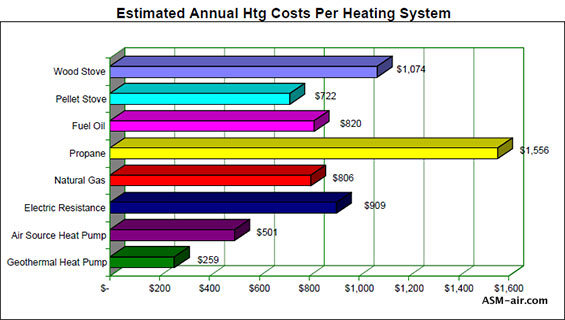What are Mini-Split Heating Systems?
For those homes already possessing non-ducted heating systems, mini-splits are a great option to add onto existing heating elements. Typically, ductless heating systems require things like hydronic power (such as hot water heaters), or utilize space heating methods (which generate heat via kerosene or propane). Mini-splits are ideal when making additions to a home, as expanding existing duct work can be problematic in some situations.
Mini-Splits are comprised of two main components. A compressor or condenser is situated outside of the home, while as air handling unit is outfitted indoors. These separate components are linked via conduit, which consists of a power cable, condensate drain, refrigerant and suction tubing. If there are numerous air-handling units, each will contain as associated thermostat. This is helpful for regulating the air temperature in each room where the unit is placed.
FIVE Advantages of mini-split heat pumps....
1/ Better Heating of Individual Rooms/Zones.
When it comes to adequately heating individual rooms or zones within a home, mini-splits with heat pumps are highly effective. The efficiency has to do with the individual air handling units that are placed within a given room or area in the home. These units can be adjusted to heat only those rooms which are currently being occupied, unlike conventional heating methods, which provide heat uniformly throughout the home. In most cases, better insulation of a home will have an impact on the overall efficiency of the individual air-handling unit. This can help home owners save quite a bit on energy costs throughout the year.
2/ Flexibility/Increased Placement Options
Maintaining existing interior design is far easier when utilizing mini-splits. This is because the air-handling components provide a number of placement options, which is not always the case when installing other types of add-on systems. Air Handlers can be affixed to a wall, suspended from the ceiling and even mounted into drop ceilings. There is also the option of floor models, which can be beneficial for certain circumstances.
3/ Easy Installation
Those who've undertaken duct work expansions are fully aware of just how difficult such projects can get, Conversely, installing a min-split in one's home is an extremely stress-free procedure. Coupling of outdoor and indoor components can be accomplished with a three in hole, which is MUCH less invasive that other systems. Because conduit are available in a variety of lengths, outdoor units can be situated up to 50 feet away from the indoor evaporator. This increases discreet placement options for the outdoor components.
4/ Improved Energy Efficiency
Inefficient use of energy is not only detrimental to the environment, it can also greatly increase utility bills. Ducts are notorious for losing energy due to their construction, with up to 30% of generated heat dissipating while making its way through duct work. Because mini-splits don't require duct to disperse heat throughout a home, they aren't subject to the same energy loss.
5/ Ability to Customize
Another great feature of min-splits is the availability to customize. Most systems come with features like timers and built-in sleep functions, giving homeowners greater control of when and how they heat their homes. Traditional heating systems usually don't allow for customized use, which can lead to unnecessary charges, as well as less efficient use of energy.

 PA HIC# 015779
PA HIC# 015779